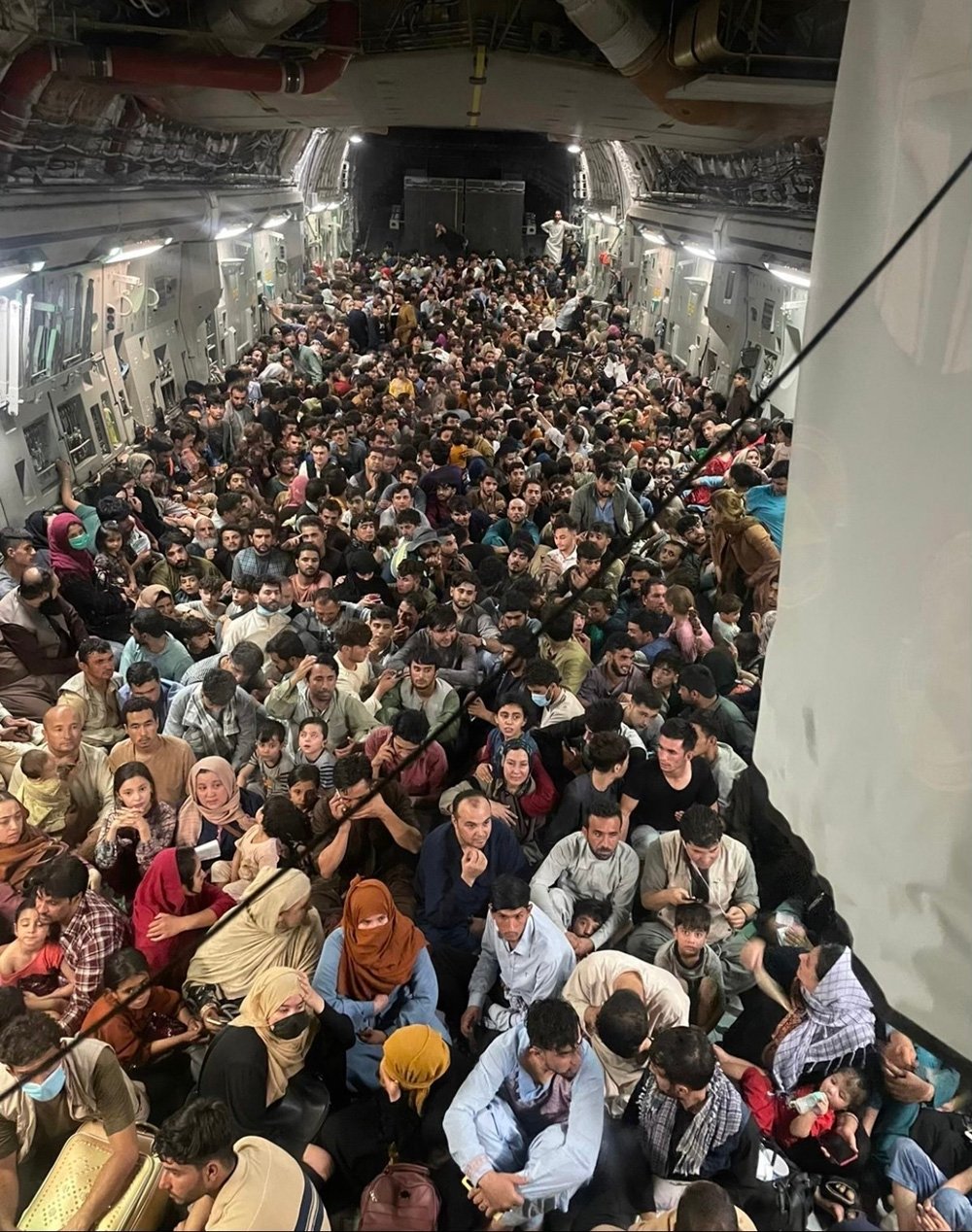Click Here to View This Page on Production Frontend
Click Here to Export Node Content
Click Here to View Printer-Friendly Version (Raw Backend)
Note: front-end display has links to styled print versions.
Content Node ID: 405135
The planned evacuation from Afghanistan of personnel from the U.S., NATO and allied nations took a dramatic turn over the weekend of August 14-15 as the arrival of Taliban forces around the capital, Kabul, sparked a panicked reaction. The lightning gains made by the Taliban in the previous days had resulted in the rest of the country coming under its control, and had taken U.S. and allied commanders by surprise.
Faced with Taliban forces entering the capital and the flight of President Ashraf Ghani to the UAE, a mass evacuation was ordered, along with the rapid deployment of further troops to secure the operation. The mass airlift began on August 15, with helicopters such as U.S. Army CH-47s and Department of State Air Wing CH-46s ferrying U.S. and other personnel from embassies and key installations to Hamid Karzai International Airport for onward transport, mostly to other locations in the region, such as Qatar.
Air Mobility Command’s C-17s and KC-135s are bearing the brunt of the effort, supported by C-5s and Marine Corps KC-130s. Other nations have established air bridges out of Kabul, notably the UK—whose C-17, Voyager, Hercules and A400M aircraft have been highly active—and Canada, with C-17s and C-130s.
By the following day, the Taliban were in control of Kabul, leading to panic among Afghans. Large numbers of mostly young men fled to the airport, where they overwhelmed security. Thousands thronged the apron, taxiways, and runways, attempting to force their way aboard departing aircraft. Some clung to aircraft as they taxied. At least five died during the panic, including a reported three that fell from a C-17 after it had taken off. At least one C-17 arrived at its destination with human remains in the wheel well.
Ground forces trying to clear the path of departing aircraft enlisted two AH-64 gunship helicopters that flew at head height in an attempt to shepherd the crowd away from the moving aircraft. Ultimately they were unsuccessful in adequately holding back the crowd, leading to a temporary closure of the airport.
Nevertheless, large numbers of people were safely extracted during the day, mostly Afghan nationals who had worked alongside allied forces during the two decades of U.S. and NATO involvement in the country. In one unprecedented flight a C-17 took off with 823 passengers aboard. A Boeing RC-135 Rivet Joint aircraft orbited above Kabul throughout the day to gather communications intelligence, while AC-130J/W gunships were also on-station to provide close support if needed.

Evacuation flights resumed on August 17 with less interference. U.S. Central Command (Centcom) commander, General Frank McKenzie, USMC, visited Kabul airport to meet with ground commanders. In a statement issued by Centcom, McKenzie reported that: “U.S. military air traffic controllers and ground handlers are rapidly scaling up operations to ensure the smooth flow of military reinforcements to the airport and the evacuation of U.S. and partner civilians in coordination with our State Department colleagues. Currently, the airfield is secure and now open to civilian air traffic operating under visual flight rules.”
General McKenzie had met with senior Taliban leadership figures on Sunday in Doha, where the leaders had been in exile, where he had “cautioned them against interference in our evacuation, and made it clear to them that any attack would be met with overwhelming force in the defense of our forces. The protection of U.S. civilians and our partners is my highest priority and we will take all necessary action to ensure a safe and efficient withdrawal.”
For now, the focus is on evacuating civilians and non-combatants, but the evacuation will increasingly turn to the extraction of remaining military personnel and high-value military assets. Helicopters deployed by U.S. Special Operations Command have been gathered at Kabul airport, presumably to await transportation by heavylift aircraft, or possibly with tanker assistance for the types equipped for inflight refueling.
In the meantime, many aircraft from the Afghan Air Force have fled to neighboring countries. By August 16 no fewer than 22 fixed-wing aircraft and 26 helicopters were gathered at Termez International Airport, just across the northern border with Uzbekistan. Many had arrived from Mazar-e-Sharif. Types there include Cessna Caravans, Pilatus PC-12s, Super Tucanos, Mi-8/171s and UH-60s. Uzbek government officials said that they carried 585 servicemen.
One Super Tucano crashed during the evacuation, but the cause is disputed. It was first claimed that it was shot down by Uzbek air defenses, and then that it had been involved in a mid-air collision with an Uzbek MiG-29 fighter, with both aircraft going down. It might also have run out of fuel, having earlier been denied entry into Tajik airspace, causing a re-routing. The two-person crew is reported as being seriously injured.
On the same day, Tajikistan reported that an Afghan aircraft with more than 100 personnel aboard had declared an emergency and had landed. If this was a military aircraft it is most likely to be one of the Afghan Air Force’s Kabul-based C-130H Hercules.
*Update: the number of passengers carried on the Aug. 16 C-17 flight was originally quoted as "around 640". That figure has now been amended to 823, as the original number only covered adults, and did not include the many children being carried by them.